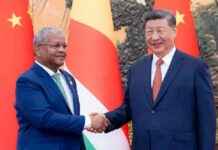China’s Economy in the Year of the Dragon: Navigating Challenges and Embracing Opportunities
As the Year of the Dragon unfolds, China’s economy faces a mix of challenges and opportunities that will shape its trajectory in the coming months. The recent liquidation of Evergrande, a prominent Chinese real estate giant, has sent shockwaves through the country’s financial sector, raising concerns about the overall health of the economy. Coupled with disappointing growth figures, high youth unemployment rates, and a general lack of confidence among entrepreneurs and consumers, China is at a critical juncture.
The Evergrande debacle serves as a stark reminder of the risks inherent in China’s real estate market, which has been a key driver of economic growth for decades. With the company’s massive debt burden and mounting financial woes, the fallout from its collapse is likely to reverberate throughout the economy, impacting not only the property sector but also related industries and financial institutions.
The Road Ahead: Navigating Economic Uncertainty
As China grapples with the fallout from Evergrande’s demise, policymakers face the daunting task of steering the economy through choppy waters. The government’s response to the crisis will be closely watched by investors, analysts, and the public alike, as it will signal Beijing’s commitment to addressing systemic risks and ensuring stability in the financial system.
One of the key challenges facing China’s economy is the specter of a middle-income trap, a phenomenon where a country gets stuck at a certain level of income and struggles to break through to higher levels of development. While China has made significant strides in recent decades, transitioning from a low-income to a middle-income country, sustaining growth and avoiding stagnation will require continued reforms and innovation.
Opportunities on the Horizon: Harnessing Innovation and Technology
Amidst the challenges facing China’s economy, there are also opportunities for growth and transformation. The country’s burgeoning tech sector, fueled by a young and dynamic workforce, holds immense potential to drive innovation and drive economic progress. From e-commerce giants like Alibaba and Tencent to cutting-edge startups in artificial intelligence and green technology, China’s tech ecosystem is a hotbed of creativity and entrepreneurship.
In addition to the tech sector, China’s ambitious Belt and Road Initiative (BRI) presents opportunities for economic expansion and global influence. By investing in infrastructure projects and forging partnerships with countries across Asia, Africa, and Europe, China aims to boost trade, connectivity, and development on a massive scale. While the BRI has faced criticism for its debt-laden projects and geopolitical implications, it remains a cornerstone of China’s economic strategy.
Charting a Course for Success: Balancing Growth and Stability
As China navigates the challenges and opportunities of the Year of the Dragon, striking a balance between growth and stability will be paramount. The government’s ability to enact reforms, stimulate innovation, and address systemic risks will determine the country’s economic trajectory in the months and years ahead. By fostering a business-friendly environment, investing in education and skills training, and promoting sustainable development practices, China can position itself for long-term prosperity and resilience.
In conclusion, the Year of the Dragon presents both challenges and opportunities for China’s economy. By addressing systemic risks, fostering innovation, and embracing new technologies, the country can overcome its current obstacles and chart a course towards sustainable growth and development. With strategic planning, bold reforms, and a commitment to stability, China can emerge stronger and more resilient in the face of uncertainty.









![Indie music fans gather at l’Antipode for [Face B] Kool Things soirée on Saturday night news-15112024-105933](https://shanghainewstv.com/wp-content/uploads/2024/11/news-15112024-105933-218x150.jpg)







